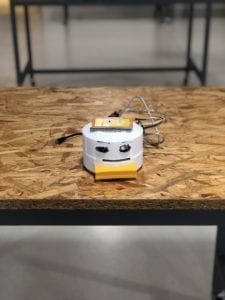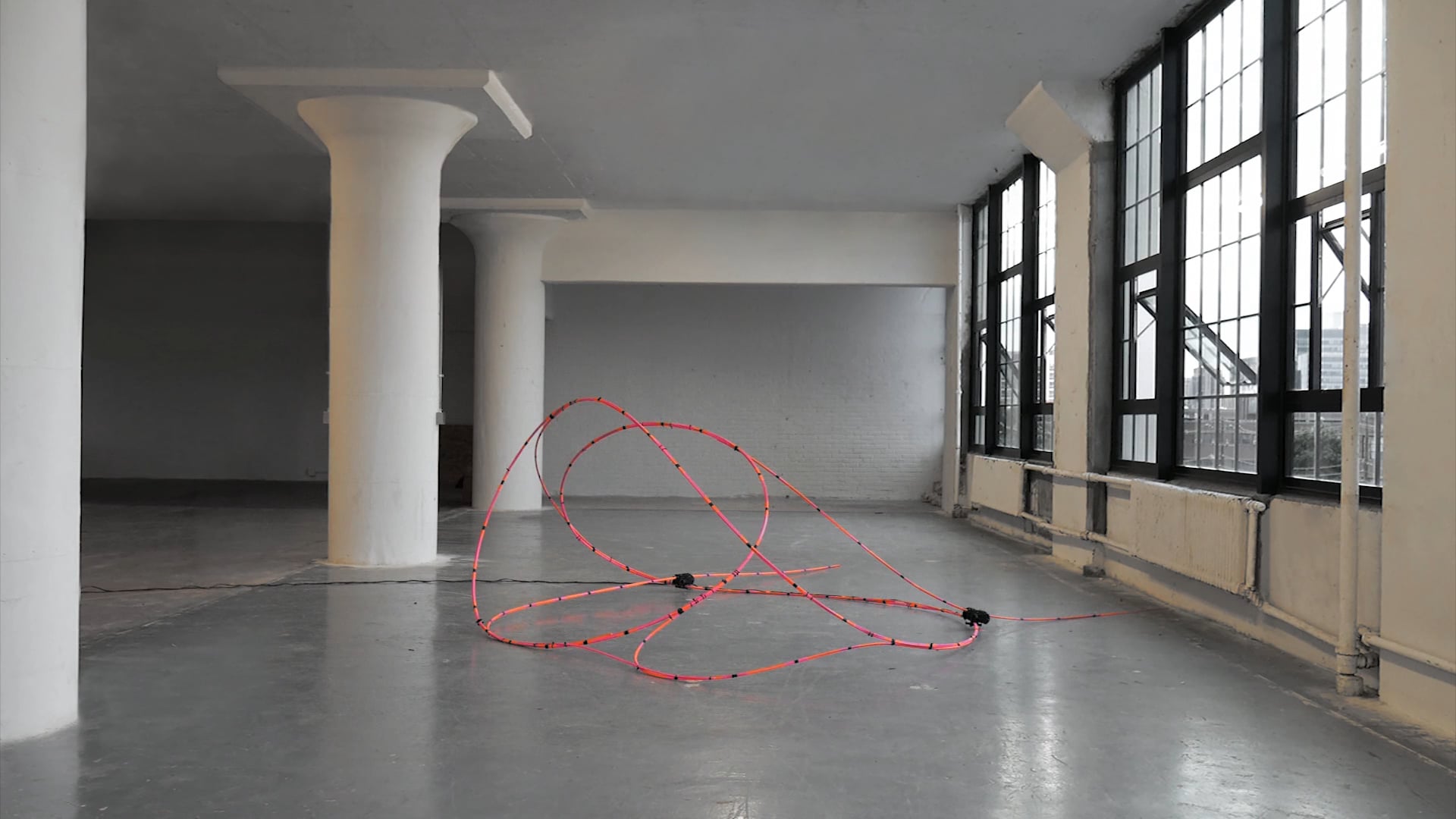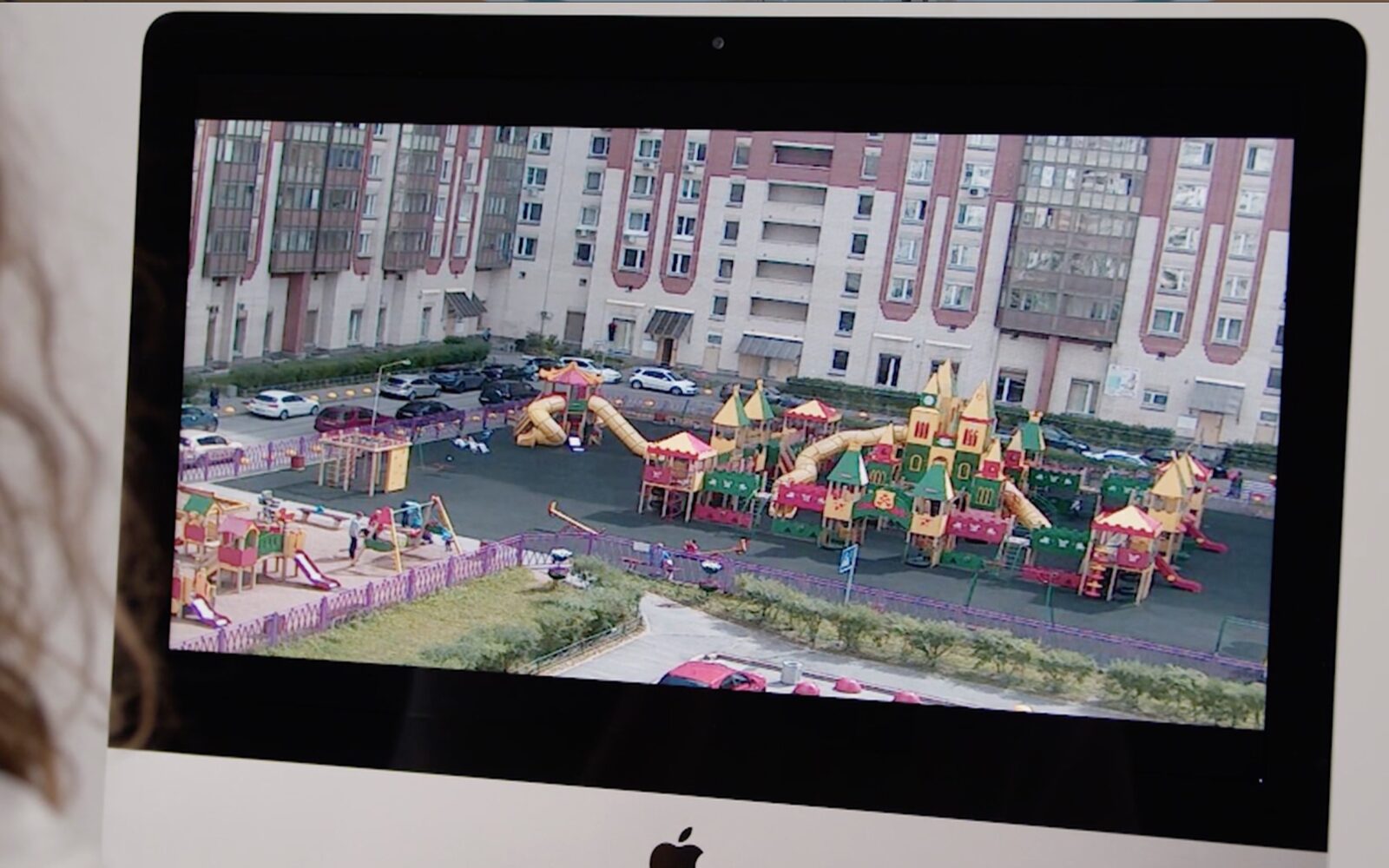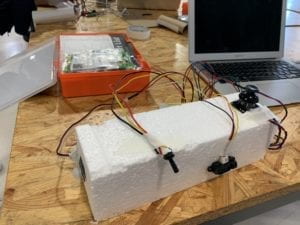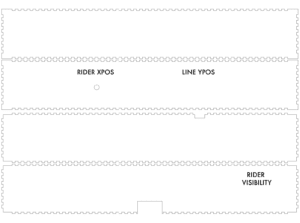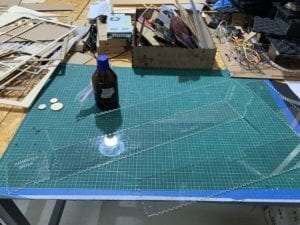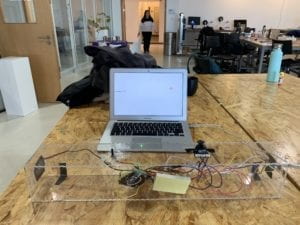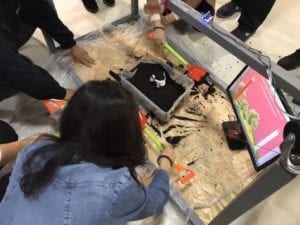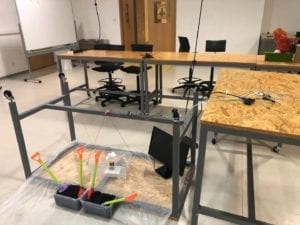FeedBot – Russel Sy – Rudi
As I have said previously, the conception of my ideas were based off of the goal to encourage a new and beneficial idea. In this case, the original goal of my project was to encourage a user to eat healthier. The original plan was to lay out different healthy and unhealthy foods on a table, and the user would but the food into a basket and then a screen would tell the user how good or bad the food is for you, as well as nutritional and health facts.
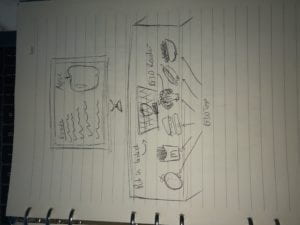
After user testing, I listened to the feedback given to me and made adjustments to my final idea. In order to incorporate the physical part of my project with the digital, as well as creating a more cohesive and creative take on eating better, Rudi helped me think of putting a robot head on top of a computer that eats food cards, while the screen displays the robots body. If the robot were to eat a bad food, the robot would malfunction and then the screen would show bad facts about the food. On the other hand, if the robot were to eat good food, the robot would work perfectly and facts about healthy eating would appear. Later on, the idea expanded beyond food and went into life habits as well like smoking. One thing that I did not think about previously, but heard from user testing, was to incorporate sound into my project. Thinking back over it, the final project would not be very interesting at all if there was no sound and auditory feedback when the user interacted with it. I incorporated background music, as well as positive and negative auditory feedback like “yay” or “malfunction” when a good or bad card was placed into the robot mouth.
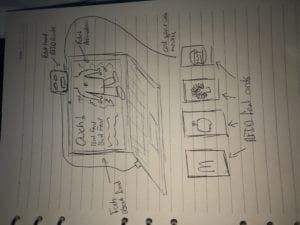
The conception of this final idea started with a drawing, which then went to 3D designing and finally printing. The thing about the 3D printing process that I would have liked to change is the size of my 3D printed robot head, as well as the amount of inside cross fills. The robot head for the purposes of my project was too big, which made it a little heavy for attaching to the screen of my laptop using a hook. If the laptops screen were to be angled too far back, the screen would bend all the way down due to the weight of the robot head. Other than making the head smaller, another way to solve this problem would be to reduce the filling crosses in order to make the robot head lighter. This would make it so that the screen wouldn’t fall backwards due the the the robot head weight. Other than those problems that I couldn’t fix, I also had to solve problems before the printing process. For the design of the robot head, the outside was quite simple, but the inside was hollow. From experience, 3D printing something that is hollow on the inside can lead to problems and bad printing. In order to solve this, I printed the head in 2 separate parts – the bottom which housed the hole and the mouth opening, and then the top which just acted as a cap for the hole. Since the cap was printed separately from the main part, the plastic did not get the chance to melt and start sagging into the hollow space. I also made the inside of the mouth opening angle downwards so that when a card was inserted into the mouth, it would slide down with ease. One thing I wish I could’ve done after the fabrication process would be to spray paint the whole unit, in order to give it a more final and polished look.
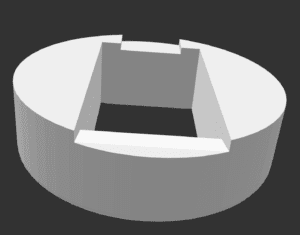
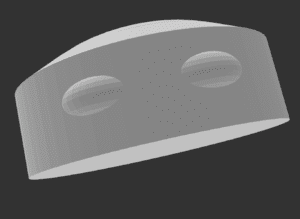
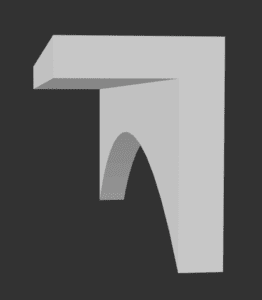
In the IMA showcase, I was able to show my project to strangers who had no previous knowledge of the class. Although I had to prompt them to put the cards into the mouth, they were able to figure out the purpose of the project without any further explanation. After going through all the cards, the users would ask me if they were correct in their thoughts on the purpose. Most thought it was a good way to teach young kinds about good life habits, and that the idea could be expanded upon further using more cards and visuals. In this sense, the goal of my project was met. For my definition of interaction, I think that my project was interactive. The audience was able to participate and even children were able to use my project. Inserting a card into the mouth of the robot was like feeding a little pet or baby, which added to the interactivity. And the audience was able to leave learning something new. A great comment I had received was from a teacher who said this project would be really useful in her classroom since her class was just starting to learn about balanced meals and healthy diets.
If I had more time, I would have liked to create more food cards, as well as improve the design of the cards to make it more obvious as to what the cards represented. I would have also liked to redesign the head to make it less bulky and a lot lighter. As for the visuals, I would have liked to create an animation to complement the “malfunction” animation, since there was no animation for the “yay” part of my project. For the future, I now know that 3D printing is a whole process and the first 3D printed object may not be the best representation of your work. Subsequent versions have to be made after the first in order to improve and evolve with your ideas.
To conclude, I feel like this project can be used to give a different approach to teaching children good life skills and habits, as interactive learning is always better than reading bland and boring texts.
